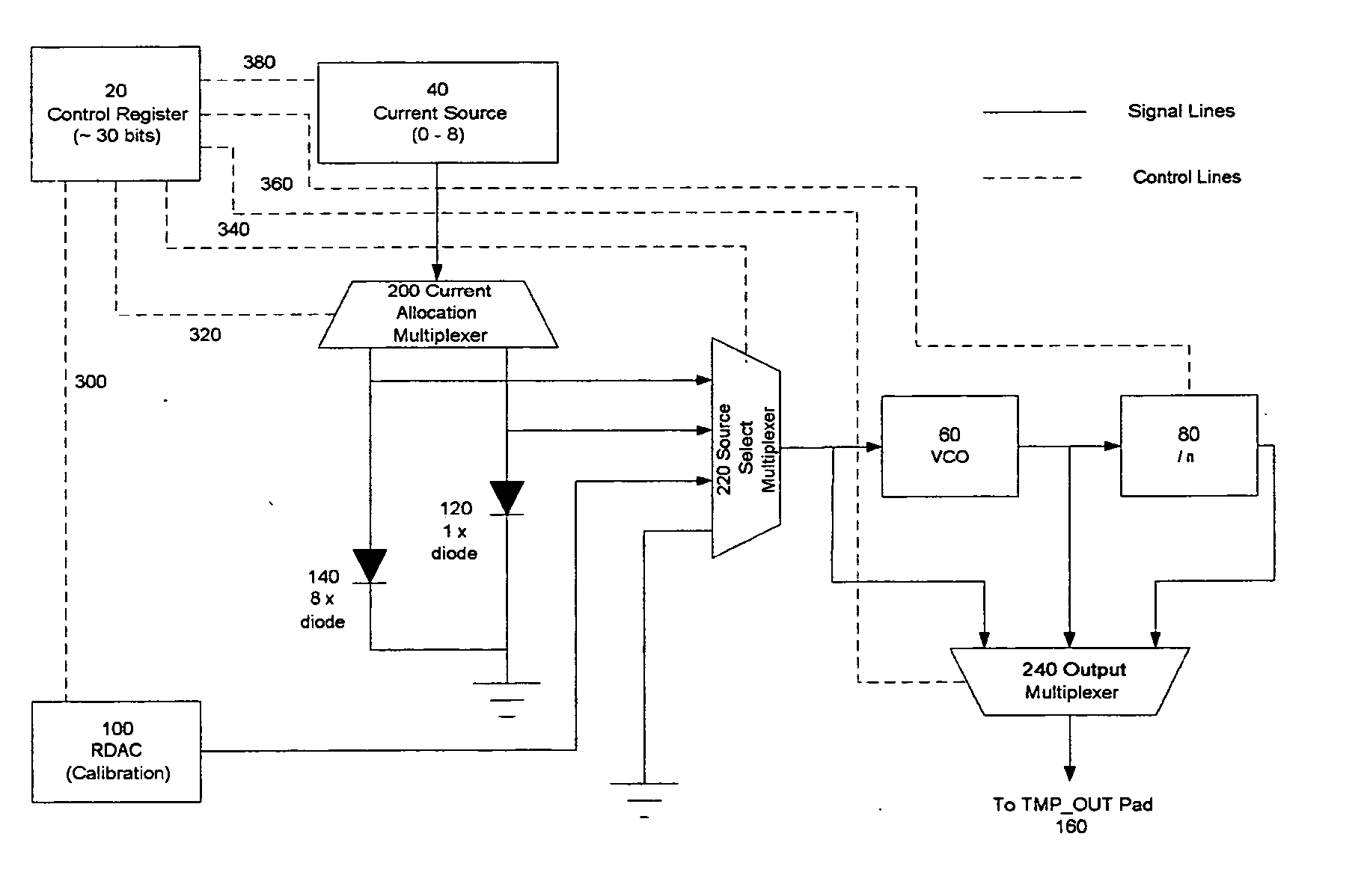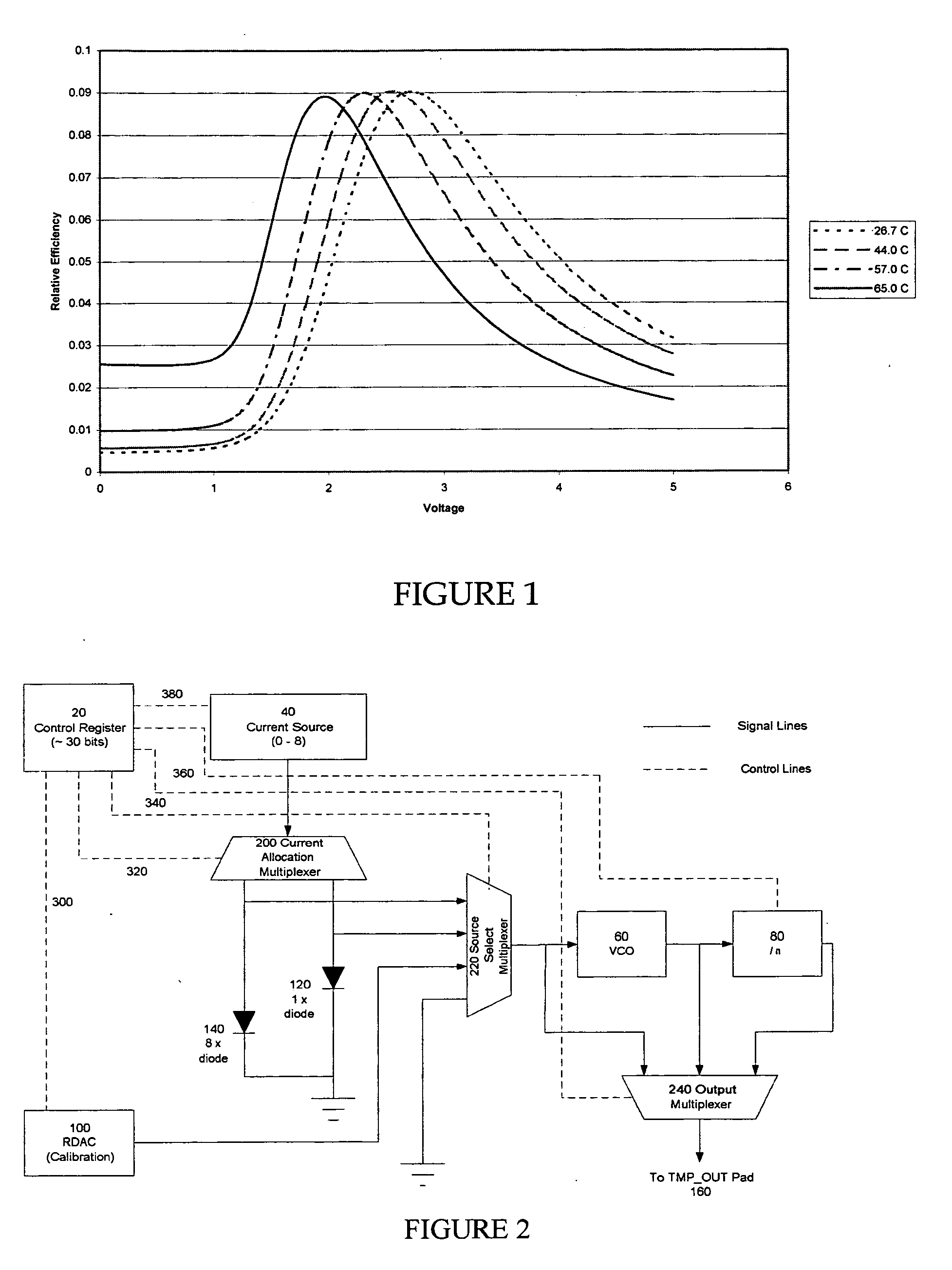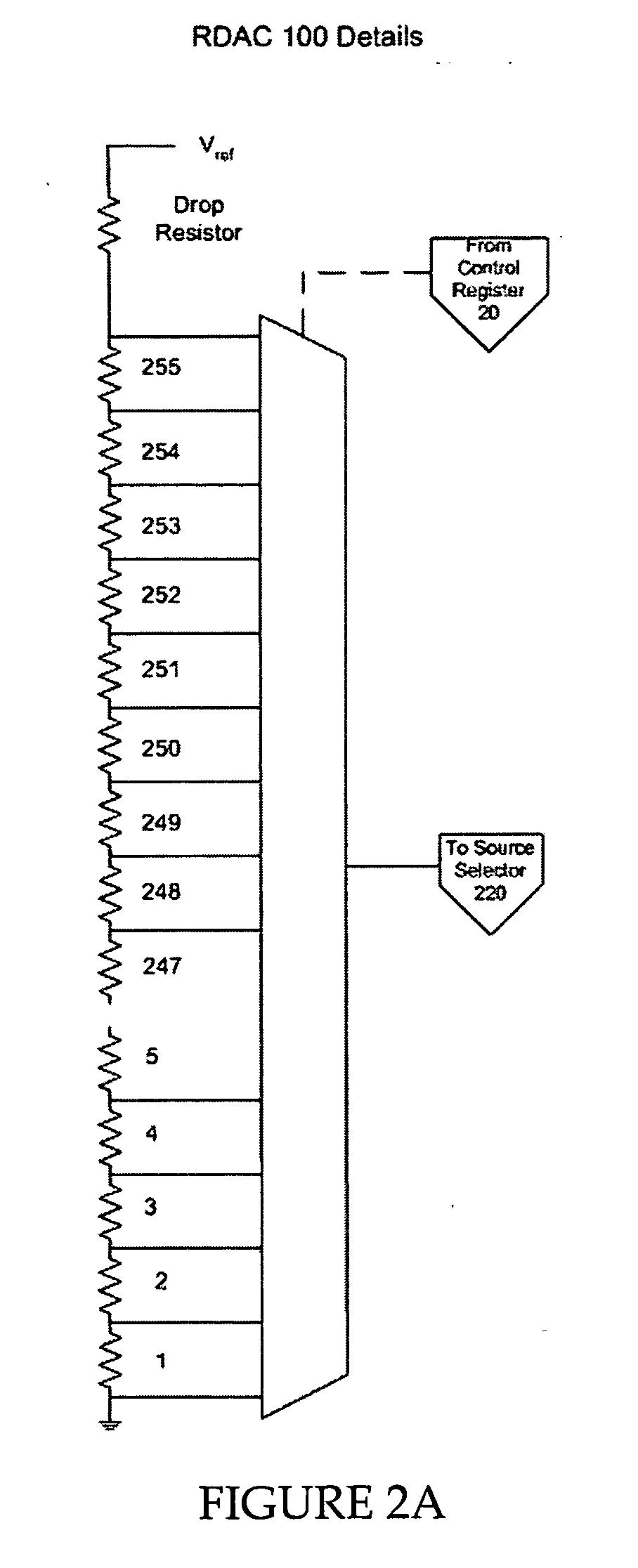Temperature sensor circuit for microdisplays
a temperature sensor and microdisplay technology, applied in the field of liquid crystal on silicon (lcos) displays, can solve the problems of insufficient accuracy of the microdisplay system, inconvenient limited effectiveness of a conventional temperature sensor that uses a diode as a variable resistor, etc., to achieve convenient and flexible determination of operation modes, improve resistance noise, and improve the effect of temperature measurement accuracy
- Summary
- Abstract
- Description
- Claims
- Application Information
AI Technical Summary
Benefits of technology
Problems solved by technology
Method used
Image
Examples
Embodiment Construction
Referring to FIG. 2 for a functional diagram for showing the circuit configuration of a temperature sensor of this invention. The major components in the temperature circuit include two diodes 120 and 140 of eight-times area difference, e.g., show as 1× for diode 120 and 8× for diode 140. These two diodes thus have eight times difference in resistance when conducting the same amount of current. An adjustable current source 40 that is programmable and digitally controllable to have one to eight times of current are inputted to either one of the diodes 120 or 140 via a current allocation multiplexer 200. The output current from either of these diodes is inputted via a source select multiplexer 220 to a voltage controller oscillator 60 to generate a frequency corresponding to the input current and the output from the VCO 60 is inputted to an n-divider 80. An output for connecting to a TEMP_OUT pad 160 is selected between the raw output from the source selecting multiplex 220, the VCO ...
PUM
| Property | Measurement | Unit |
|---|---|---|
| thick | aaaaa | aaaaa |
| clearing temperature | aaaaa | aaaaa |
| temperature | aaaaa | aaaaa |
Abstract
Description
Claims
Application Information
 Login to View More
Login to View More - R&D
- Intellectual Property
- Life Sciences
- Materials
- Tech Scout
- Unparalleled Data Quality
- Higher Quality Content
- 60% Fewer Hallucinations
Browse by: Latest US Patents, China's latest patents, Technical Efficacy Thesaurus, Application Domain, Technology Topic, Popular Technical Reports.
© 2025 PatSnap. All rights reserved.Legal|Privacy policy|Modern Slavery Act Transparency Statement|Sitemap|About US| Contact US: help@patsnap.com



